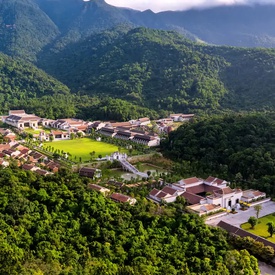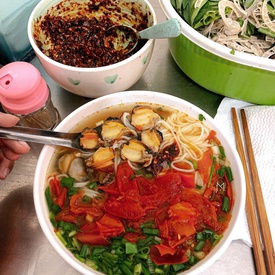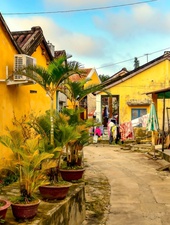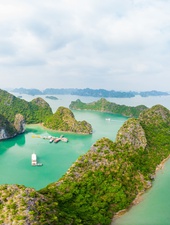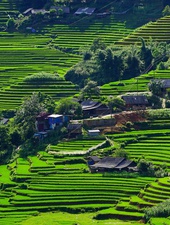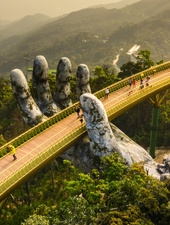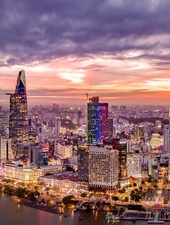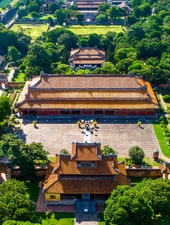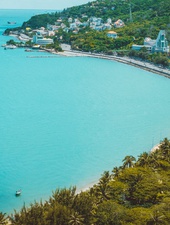Ha Giang
Multi-ethnic Culture Hidden In Majestic Nature
Location & History
Ha Giang is a mountainous province located in northern Vietnam, where the Vietnam-China border extends more than 274 km. This province serves as the source of the Lo River flowing into Vietnam and is bordered to the north by China, featuring the Thanh Thuy international border gate. To the south, Ha Giang is bordered by Tuyen Quang; to the east is Cao Bang, and Lao Cai lies to the west. It is approximately 320 km north of Hanoi, accessible via National Highway 2. Photo: mytour.com
Photo: mytour.com
Ha Giang has a relatively recent history, spanning approximately 130 years. Despite its initial challenges, including an unfavorable geographical location and underdeveloped infrastructure, Ha Giang has made a significant transformation over the past years, evolving into a captivating tourism destination.
The climate in Ha Giang is typical of northern highlands: cool in the summer and extremely cold in the winter, with occasional snowfall. Temperatures in Ha Giang range from 5 to 28 degrees Celsius, creating an ideal setting for tourism.
Ha Giang’s Tourist Attractions
Similar to Sapa, Ha Giang is renowned for its stunning mountains. Although the peaks may not be as elevated or challenging as Sapa’s, they are distinguished by a vast limestone landscape featuring unique formations of rocky pinnacles.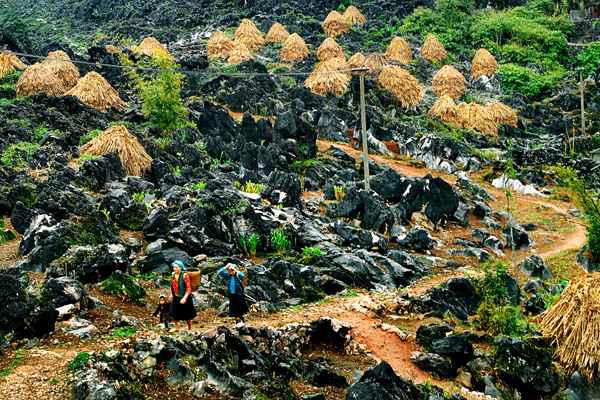 Photo: baochinhphu.vn
Photo: baochinhphu.vn
The Dong Van Rock Plateau is the most famous geological site in Ha Giang and is recognized by UNESCO as one of the world’s geological parks. Within this plateau lies Lung Cu hamlet, home to the Lung Cu Flag Tower perched atop Dragon Mountain, marking the northernmost point of Vietnam.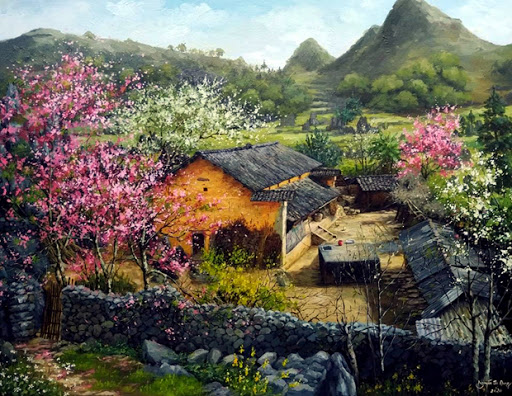 Photo: tintuchagiang.vn
Photo: tintuchagiang.vn
Ha Giang is also known for its breathtaking caves, including Phuong Thien Cave, Chui Cave, Fairy Cave, and Swallow Cave. Each cave presents mesmerizing scenery and unique stalactite formations, along with compelling legends. For example, Fairy Cave derives its name from the local belief that fairies once bathed in the waters of the Fairy Stream inside the cave.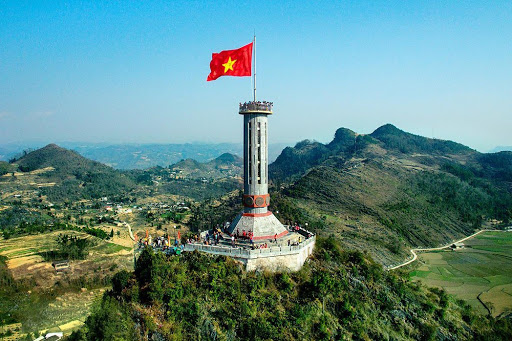 Photo: tintuchagiang.vn
Photo: tintuchagiang.vn
Additionally, Ha Giang is rich in natural diversity, featuring magnificent forests that are home to over 1,000 species of valuable timber, medicinal plants, and rare animals, including tigers, peacocks, and pangolins.
Ha Giang's Unique Culture
The inhabitants of this mountainous province are primarily comprised of ethnic minorities, including significant populations of the Hmong, Tay, Yao, and Nung groups. This rich ethnic diversity fosters a vibrant tapestry of traditions. Each ethnic group has its own customs, particularly in marriage, rituals, festivals, and funerals. For instance, a Hmong groom's marriage is contingent upon his ability to kidnap his bride—a rite shrouded in secrecy.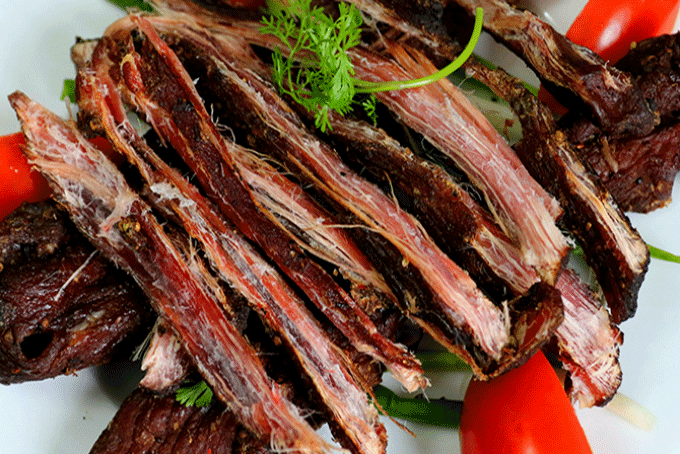 Photo: pasgo.com
Photo: pasgo.com
For a glimpse into the unique customs of these ethnic minorities, it is recommended for tourists to partake in trekking tours or travel by motorbike, as many ethnic communities live apart from mainstream society. Visitors may encounter charms adorning local homes intended to ward off demons and evil spirits. The locals are known for their hospitality, often treating guests as honored visitors and sharing traditional dishes such as Thang Co (horse meat hot-pot).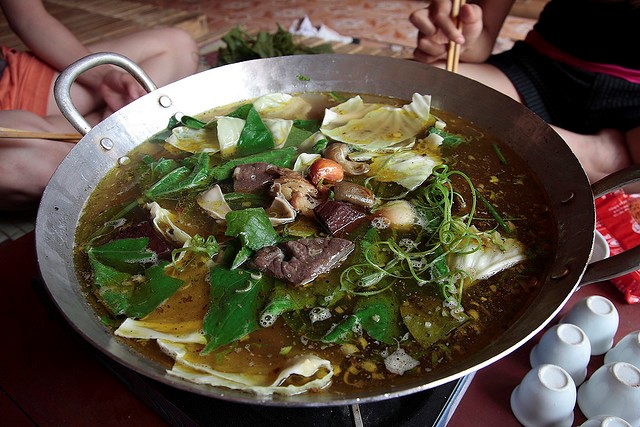 Photo: flynow.com
Photo: flynow.com
A unique cultural event in Ha Giang is the “Khau Vai Love Market,” held monthly on the 26th and 27th days of the lunar calendar. At this market, both single and married individuals from different ethnic backgrounds gather to seek companionship and share their feelings. The Lunar New Year is an especially vivid time to visit Ha Giang, offering the chance to witness various traditional customs from the ethnic minorities, such as success celebrations, rain rituals, son rituals, crossbow shooting competitions, pan-pie performances, and “Con” throwing competitions.
How To Get There
As Ha Giang's infrastructure continues to improve, access to the province is primarily by car or motorbike along National Highway 2, which runs north from Hanoi, passing through the provinces of Vinh Phuc, Phu Tho, and Tuyen Quang. Travelers with private vehicles will find it convenient, while those without can catch a coach from various bus stations in Hanoi, including Giap Bat, Gia Lam, My Dinh, Luong Yen, or Ha Dong. The ticket price typically ranges from 150,000 VND to 200,000 VND (approximately $6 to $9) for a one-way journey.
| 15°C | ||
| Humidity | 88% | |
| Wind | 3.7 km/h | |
| Sunrise | 23:29 | |
Seasonal Guides
Best Of Ha Giang
See, Eat, Sleep, Shop, Stay - The Best of Ha Giang
Frequently asked questions
Is Shan Tuyet tea good? Where can you buy Shan Tuyet tea?
Yes, Shan Tuyet tea, also known as Snow tea, is a unique specialty from Ha Giang, home to some of Vietnam's oldest Shan tea trees. This tea is naturally cultivated, offering a delicate aroma and numerous health benefits. For the best quality Shan Tuyet tea, visit Shan Tuyet Tea Ha Tuyen at 16 Vo Van Kiet, Group 4, Nguyen Trai, Ha Giang City, Ha Giang.
What are must-sees in Ha Giang?
No one can overlook the breathtaking views that Ha Giang has to offer. In addition to the mesmerizing landscapes along the way, here are some must-visit attractions:
• Quan Ba Heaven Gate
• Dong Van Rock Plateau
• Lung Cu Flag Point
• Ma Pi Leng Pass
• Khau Vai Market
• Sung La Valley
Is it possible to visit Ha Giang from Ha Noi for 2 days 1 night?
Traveling to Ha Giang typically takes about 8 hours by car and up to 10 hours by motorbike due to the challenging mountainous terrain. While a one-night visit is technically possible, it's not advisable because you may feel exhausted and have limited time for sightseeing and relaxation. A 3-day, 2-night itinerary is highly recommended to fully experience the beauty of Ha Giang and enjoy its attractions.
What to see in Ha Giang when travelling in September?
Ha Giang offers stunning scenery year-round, and September is particularly enchanting. During this month, you can admire the vibrant golden rice fields and experience the breathtaking beauty of the majestic mountain passes. It's a perfect time to explore the region’s natural wonders!
When is the buckwheat flower season in Ha Giang?
November and December are the ideal months to witness buckwheat flowers blooming across the hills of Ha Giang. Additionally, you'll find vibrant yellow rape flowers appearing from mid to late December. The weather during these months is pleasantly dry, sunny, and cool, making it perfect for photography and sightseeing in Ha Giang.


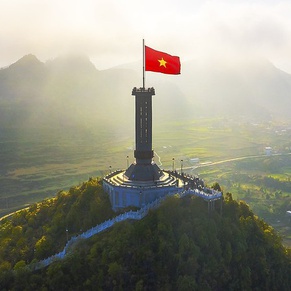 Ha Giang Observation Deck
Ha Giang Observation Deck
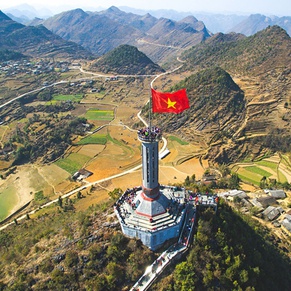 Lung Cu Peak (Ha Giang)
Lung Cu Peak (Ha Giang)
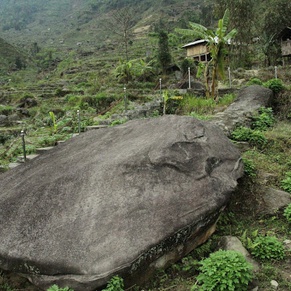 Nam Dan Old Stone Field
Nam Dan Old Stone Field
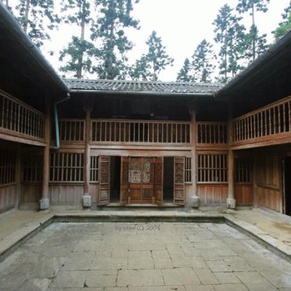 The Mansion of Vuong Familiy
The Mansion of Vuong Familiy
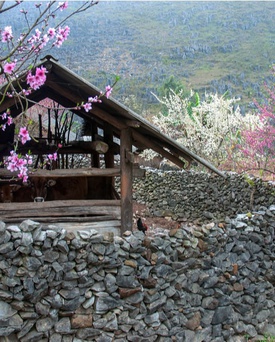 Ha Giang in January
Ha Giang in January
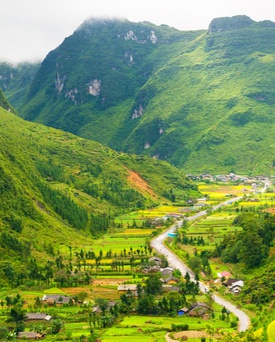 Ha Giang in February
Ha Giang in February
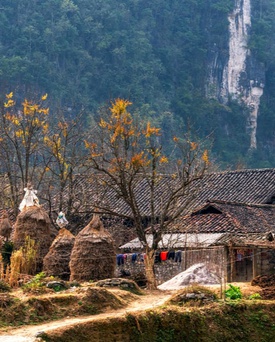 Ha Giang in March
Ha Giang in March
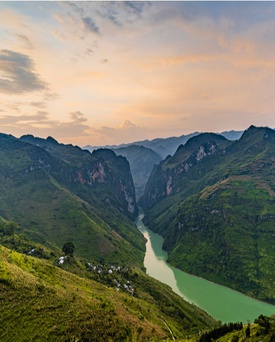 Ha Giang in April
Ha Giang in April
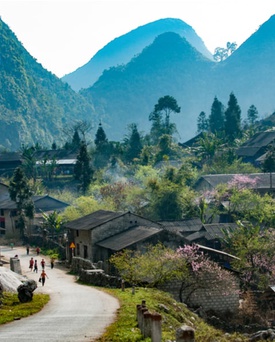 Ha Giang in May
Ha Giang in May
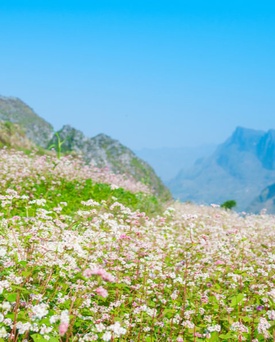 Ha Giang in June
Ha Giang in June
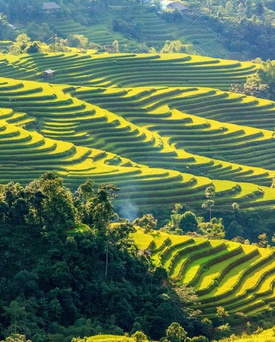 Ha Giang in July
Ha Giang in July
 Ha Giang in August
Ha Giang in August
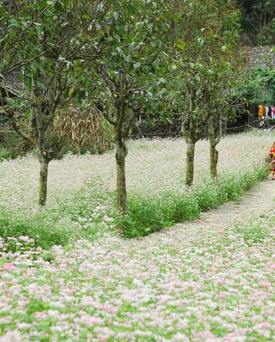 Ha Giang in September
Ha Giang in September
 Ha Giang in October
Ha Giang in October
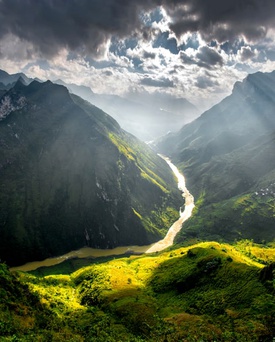 Ha Giang in November
Ha Giang in November
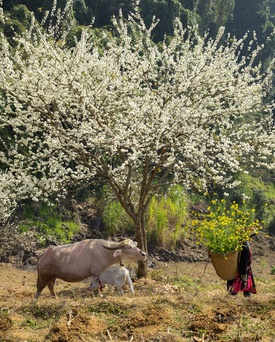 Ha Giang in December
Ha Giang in December
